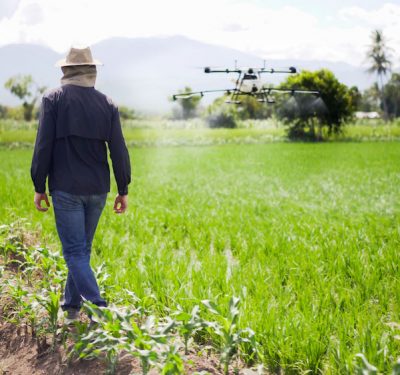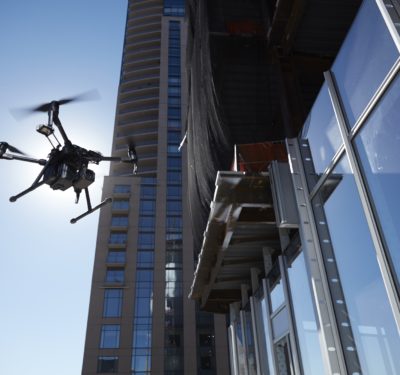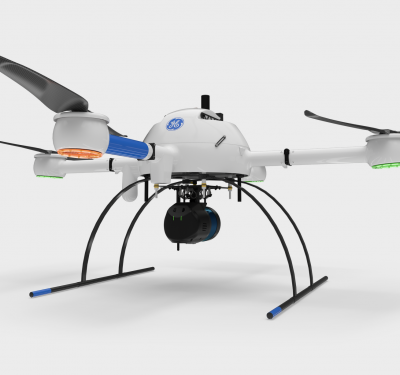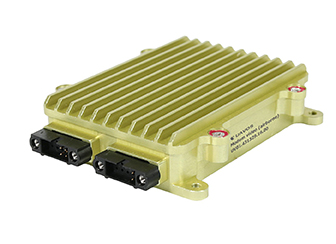Editor’s Note: As attention increases regarding aircraft activity in the eastern U.S., Inside Unmanned Systems will be providing substantive context from UAS and AAM industry experts.
Matt Sloane is the co-founder and Chief Strategy Officer at SkyfireAI. With over a decade of experience in public safety and drone technology, Matt has helped countless agencies integrate drones into their critical incident response. Prior to Skyfire, he worked as a medical news producer at CNN and served as an EMT. Matt is actively involved in shaping drone regulations and policy and is a licensed pilot.

It’s aliens! It’s the Iranians! It’s just airplanes!
I’ve heard it all over the last several weeks, as the country has been entranced by alleged sightings of drone swarms all over New Jersey and surrounding states.
As somewhat of a drone industry expert, everyone from my family to my friends, former colleagues and various news outlets have asked my opinion on just what the heck are these drones?
First of all, let me state unequivocally — I don’t know, and anything I say below is somewhere between complete speculation and an educated guess.
The most boring, albeit plausible, explanation I’ve heard is that it’s a combination of small, general aviation airplanes and probably a bunch of “lookie loo” drones – most of which we never notice, because we tend not to look up as a society.
The most interesting – and also plausible – explanation is that they are radiation detection drones, and the government is flying them around as a test to see how the public would react if they started doing this regularly to detect things like dirty bombs.
Whatever the explanation, one thing is absolutely true — we need to get used to it!
Although Jeff Bezos promised us ten years ago that Amazon would be delivering all of our packages by drones, and I’m still standing on my lawn waiting; the truth is it’s coming, and not just to deliver dog food.
Public safety drone use over the last decade has skyrocketed, and although most of those flights have an operator standing right underneath the drone – making it obvious who’s flying and for what reason – the advent of “Drone As First Responder” programs means police and fire departments are flying them from centralized locations, up to two miles away. That means their origin point and purpose may not be immediately clear.
In addition to that, there are programs in development to use drones to deliver things like defibrillators, EpiPens and Narcan in response to 911 calls, drones being used to survey power grids and pipelines, drones that are taking background radiation readings, bridge inspections, and more.
Add to that air taxis, which are being tested in several locations across the country, and the eventuality of package delivery drones, and our skies are about to get a lot more congested.
Ultimately, this is good news for us as a society — it’ll mean things are far more efficient, and may help reduce gridlock on the roads; but it also means a potential loss of some privacy, more drones falling out of the skies, and the occasional “rogue” drone that will blend in with the rest.
So with all of that said, is there anything we should be doing as a society to better prepare ourselves, so we don’t all collectively freak out when this starts to happen en masse?
Absolutely! First, at a minimum, if you are flying a drone, follow the rules. Those include registering your drone with the FAA (it’s $5), having a Remote ID-compliant aircraft and sticking to the areas where you’re approved to fly.
At a regulatory level, we need the Department of Transportation and the White House to release the proposed rule-making for Part 108 – which effectively sets up the framework for how drones flown “beyond line of sight” should operate. The FAA Reauthorization Act of 2024 mandated that this rule be made available for public comment by September, but it has yet to happen; and may be delayed even further by the upcoming change in administration.
Finally, we need to get smart about drone detection and mitigation. Currently, the Department of Justice has the authority to take down drones that are a threat, but only with a lot of prior coordination and sign-offs, meaning it’s only really possible during large, planned events like the Super Bowl.
The Department of Defense has the authority to do the same, but domestically, they can only do it when the drones are over their installations; and the Department of Energy has similar authority over things like nuclear power plants.
We need common-sense ways to delegate that authority down from the federal level to, at the very least, the state level, if not the local level at some point in the future. This means that these entities would have the ability to take down drones that posed a threat, rather than waiting on the federal government to show up and handle it – something that, given current resources, may never happen.
It’s also important to point out one thing we absolutely should not be doing to counter this perceived threat – and that’s shooting down drones!






